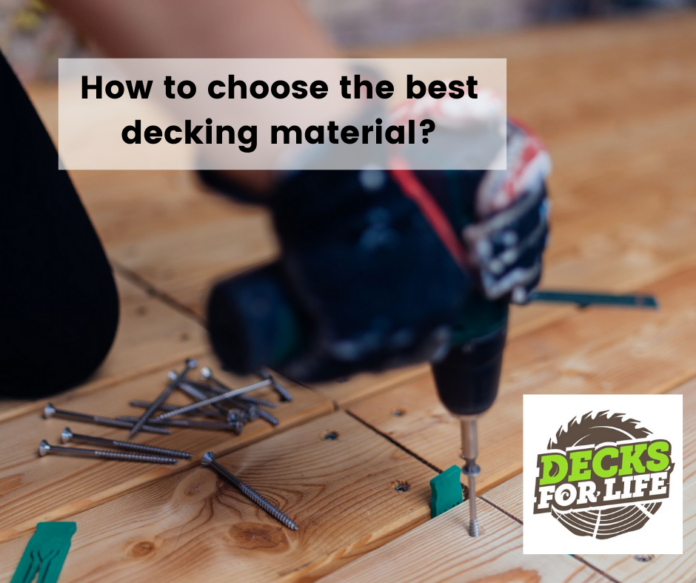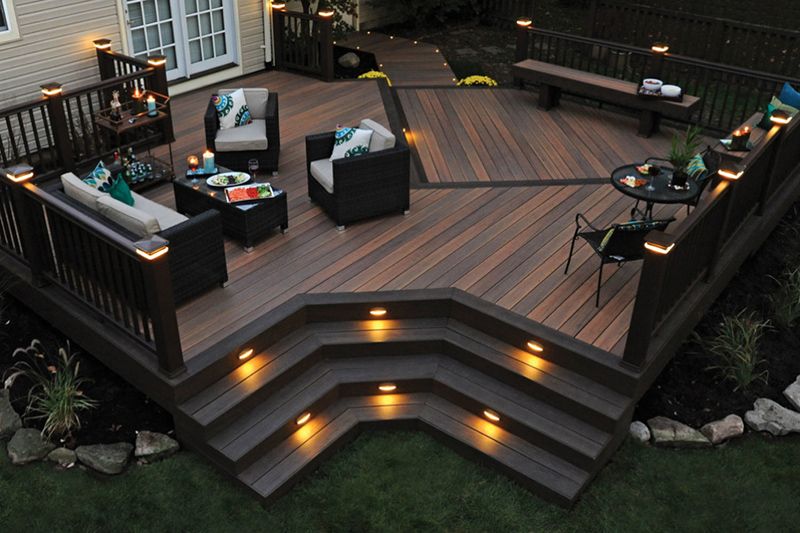When your deck requires repairs, you know it well yourself. Either there are some small changes required or major ones, the replacement becomes pretty necessary to replace or treat the deck in a much more remarkable way. The changes that one could encounter are wear or tearing of the base or framework of the deck. The wooden floor might absorb a lot of moisture, causing damping or rotting of the deck. To get rid of these problems, the materials in the deck need to be replaced right away. In this article, we are going to discuss the materials to choose for the deck.
Should you repair the deck?
Before you start tearing off everything to replace the deck with new materials and framework, you must get it checked by a professional. If the framework is rotting but the overall structural framework is firm and durable, the need to change the deck becomes inevitable. Even if the railings or the board are torn off but the framework is intact, there is no need to change the outlook of the deck but to simply replace the deck materials. The changes required for replacement can either be made by the owner if the changes are minor, otherwise professional help is necessary in this case.
Materials that are involved for deck
Well, if you visit the market to look for deck materials, you will come across a great variety of materials to choose from. The list could be endless, but in this article, we have jotted down the topmost materials.
-
pressure-treated lumber
If you are looking for the most inexpensive and natural remedy or material for the deck, then pressure-treated lumber is a good choice as it is made up of natural wood, though it is often incorporated and treated with chemicals to make it pressure-treated lumber. Even though chemicals are added, it is still cheap and is often chosen by people who want a natural deck covering. However, lumber can crack or split after a long time has passed. Therefore, it requires proper restraint and washing. But overall, it is an inexpensive option.
-
Natural woods
Natural wood, as the name suggests, is all-natural and does not have any sort of chemical preservatives added to it. Some woods are made up of oils or tannins that are naturally strong enough to keep bugs from biting them or stop the wood from rotting. Other natural woods, such as tropical woods, are also capable of resisting bug bites. It also requires power washing and prevents staining. Try using cedar deck materials; they are durable and resistant to rot.
-
Composites
When wood fiber and plastic are combined, it forms the composite, which is also an excellent option as a decking material. The composites are also durable, strong, and firm and do not require a lot of washing. You can give it a finishing touch with paint. However, composites like wood do not wrap or crack. But some people often do not appreciate the artificial texture composites give to the deck and hence refuse to have it over the deck.
-
Plastic
The plastic used for deck material is made up of PVC and polyethylene, but another option used could be plastic lumber, which is pure plastic or you can say 100% plastic. Plastic is very lightweight but also durable enough to be used as a deck material. However, esthetically, plastic looks more artificial as compared to composites, and when the outer look isn’t very pleasing, the overall look of the deck gets compromised.
There are also many other options one could opt for as a deck material, but the above listed are the most commonly used.



















